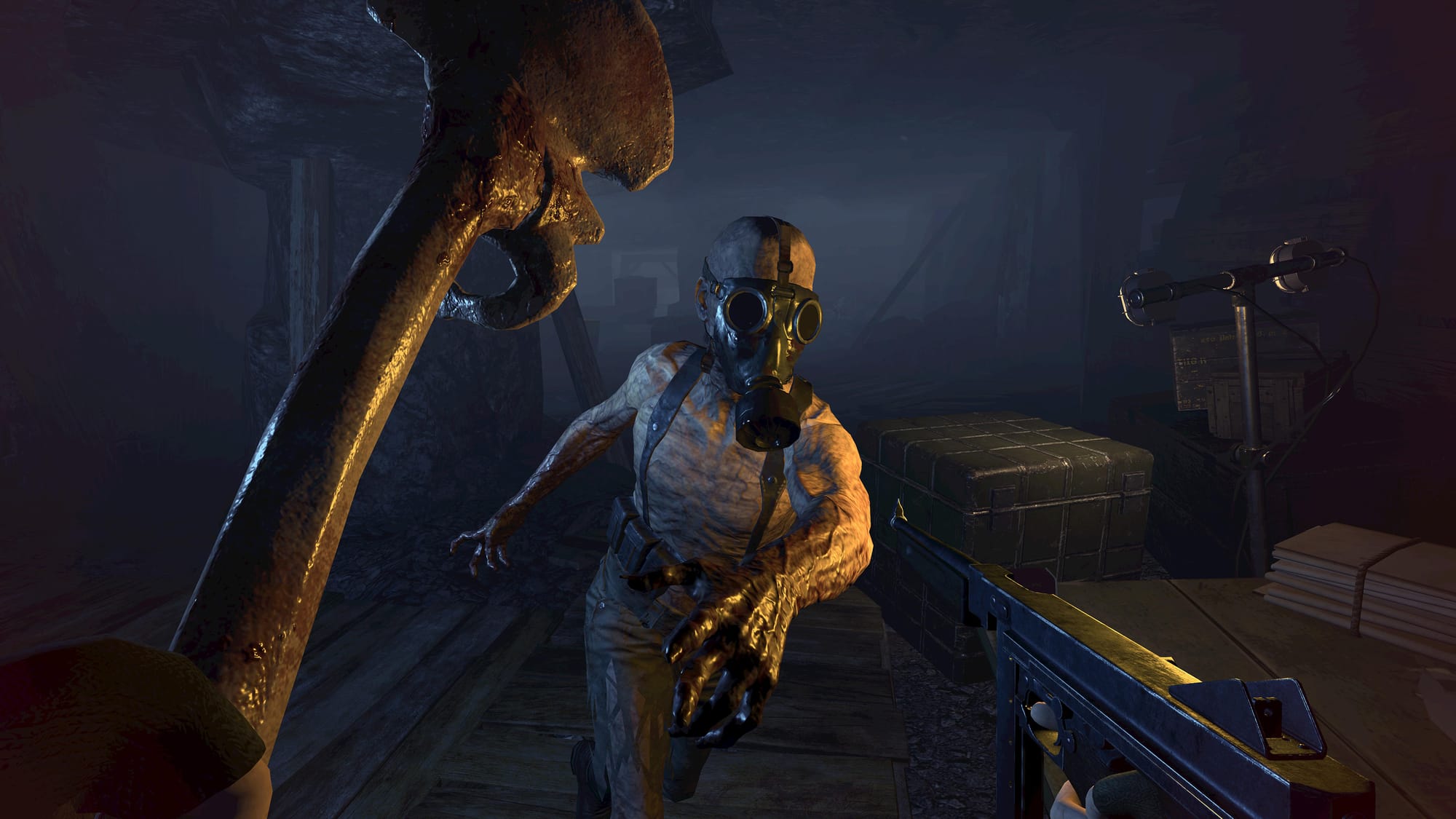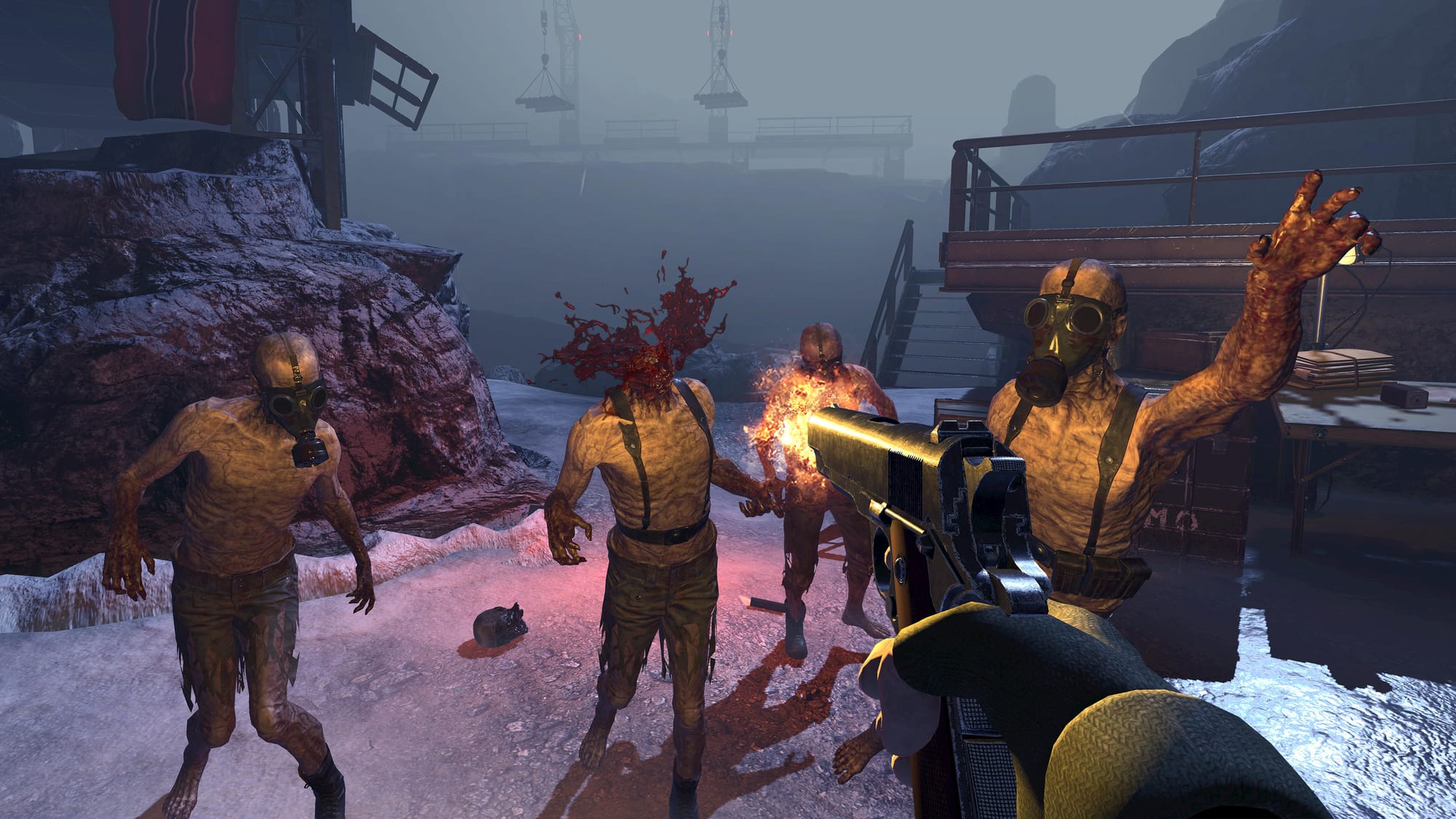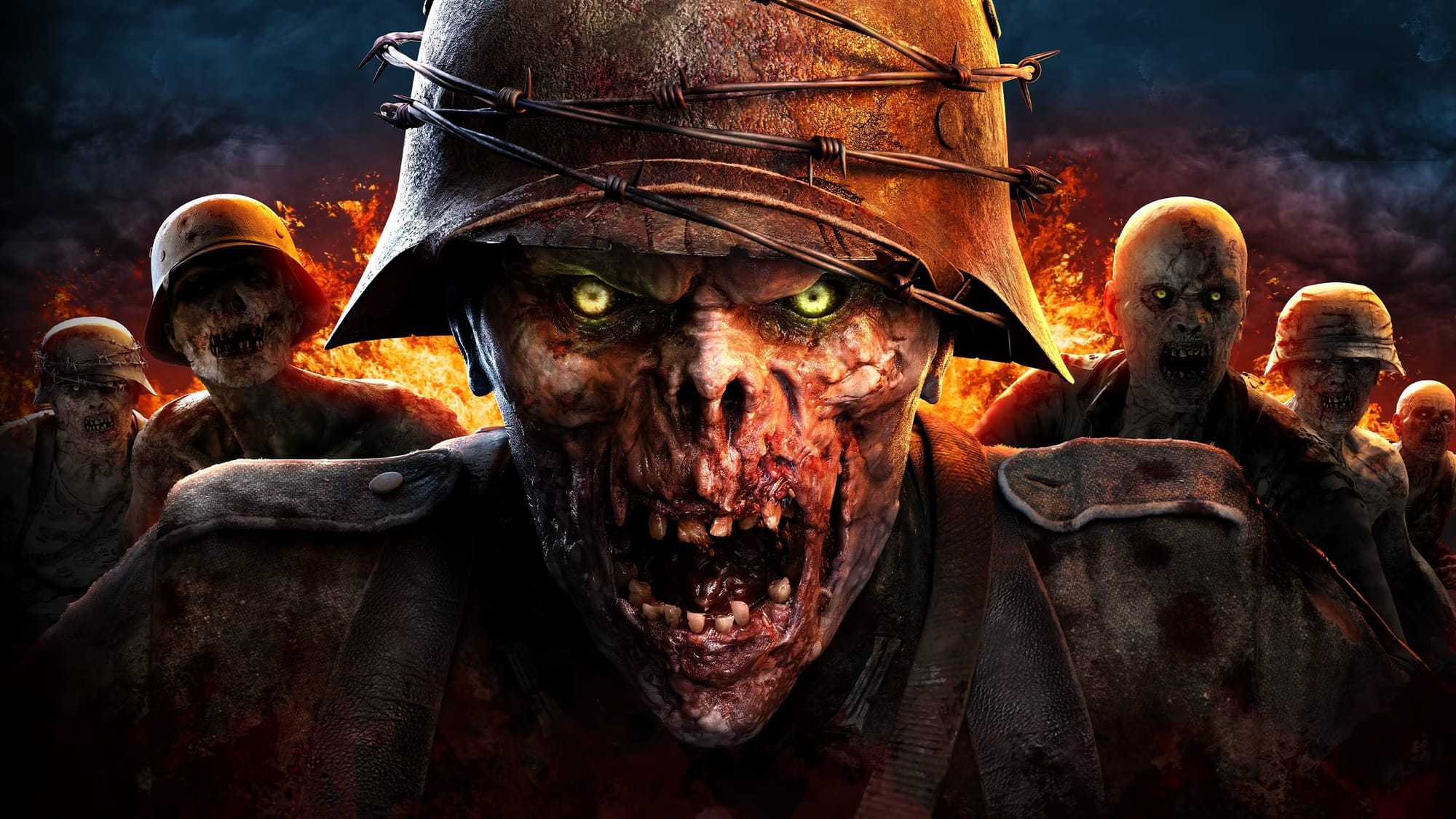In a crowded field of zombie shooters, Zombie Army VR believes it can make a lasting impression. Read on for our full interview:
Developed by Rebellion, Zombie Army VR closely follows last November’s launch of Sniper Elite VR: Winter Warrior. Featuring online two-player co-op, this campaign sees you reprising the role of a Deadhunter as you fend off undead Nazis. Rebellion provided UploadVR with exclusive screenshots, which you can alongside the new story trailer below.
We recently spoke with Jordan Woodward and Chris Cook, Heads of Design for Rebellion and XR Games respectively, to learn more. Asked how Zombie Army VR distinguishes itself from the competition, Woodward believes the paranormal setting sets it apart from more realistic or survival-focused competitors, while Cook believes the general vibe helps.
“World War 2 plus zombies with the old equipment is not really offered in many places. We’re pushing for that sort of tactile but fast-moving gameplay. Things like making the gun handling as fast as possible, keeping the tempo up and staying true to its flatscreen lineage,” Cook responds.
Despite this fast-paced approach, Cook says Zombie Army VR still includes full manual reloading. “We’re trying to make that as robust and easy to use in the thick of it as possible,” Cook confirms, while Woodward explains that it feels “very tactile with the weapons but a little bit more forgiving.”

I’m told the campaign occurs between Zombie Army Trilogy and Zombie Army 4, featuring some returning characters as we visit Nuremberg and other European locations. Led by Captain Hermann Wolff, you’re tasked with fighting undead hordes near Nuremberg to save Europe and reunite Wolff with his family. I then ask a crucial question; can you kill zombie Hitler?
“We don’t have zombie Hitler in this one but we have some other big baddies to kill,” Woodward tells me.
Woodward tells me that Zombie Army VR stays faithful to the flat games but clarifies that “we haven’t brought over everything.” You’ll find a few Zombie Army 4’s enemies like armored giants covered in metal plating and snipers. Cook states a ranged threat adds variety and believes the problem with fighting zombies in some games is that “it can often get a bit rinse-and-repeat.”
“There aren’t a lot of zombie games with zombie enemies that shoot back at you or behave like a sniper… Our zombies might not always be fully accurate because they’re zombies,” Woodward explains.
Woodward says the teams don’t view Zombie Army VR as a port and left out certain enemy types they didn’t believe fit, saying gameplay has been adapted for “bite-sized chunks” compared to the flatscreen games; I’m later told the game uses a similar mission system to both Sniper Elite VR entries.

Cook confirms they’re trying to make Zombie Army VR “feel similar while not being exactly the same,” calling this tricky to balance. He reasons that VR offers more freedom with two-handed gameplay than you’d normally get, telling me the teams looked at previous Zombie Army games and concluded some encounters would be “pretty hard” in VR. Detailing the adaptation challenges further, Woodward mentions they adapted the HUD elements for greater immersion, using the wristwatch approach to show your combo counter and health.
With performance, the game targets a locked 72 frames-per-second on Quest, while PlayStation VR2 and PC VR (hardware dependent) aim for 90fps. On PSVR 2, Rebellion tells me that Zombie Army VR supports haptic feedback for both the headset and Sense Controllers, eye tracking for foveated rendering, and adaptive triggers. bHaptics are also supported.
Zombie Army VR will reach PSVR 2, Quest, Rift and Steam in 2024.





